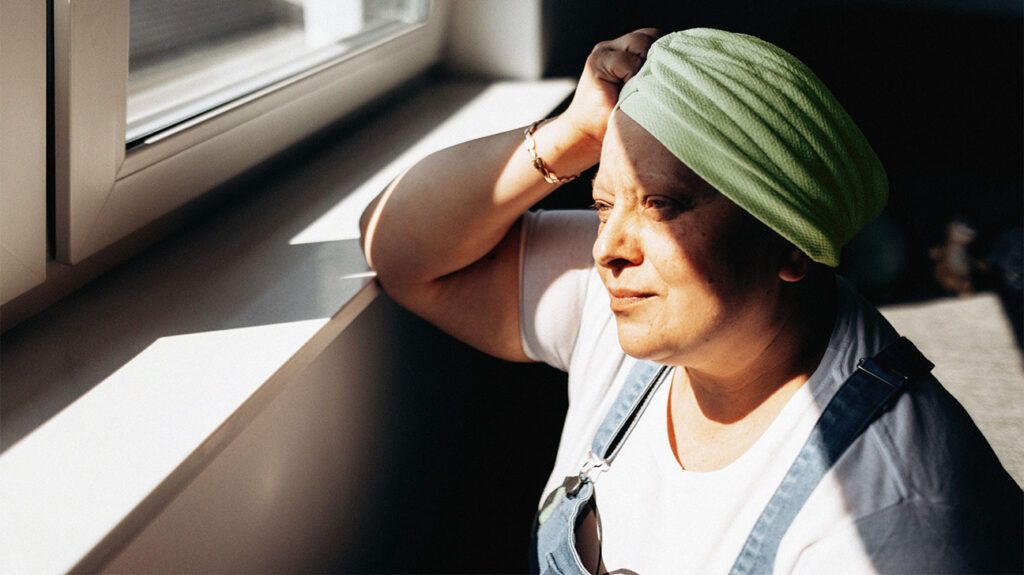Lymphocyte-depleted Hodgkin’s lymphoma (LDHL) is a rare subtype of Hodgkin’s lymphoma, a cancer that develops in the lymphatic system.
Hodgkin’s lymphoma (HL) is an uncommon cancer of the lymphatic system. This network of vessels and glands is part of the body’s immune system.
In HL, B lymphocytes, an infection-fighting white blood cell, multiply atypically and collect in the lymph nodes. Because the cells do not work as they should, a person is more vulnerable to infection.
LDHL is the rarest subtype of HL. It involves a low count of lymphocytes and a high prevalence of Reed-Sternberg cells, which are large atypical lymphocytes with multiple nuclei. Nuclei are structures in cells containing chromosomes. LDHL is more common in older adults and people with HIV.
This article explores LDHL, its symptoms, causes, and treatments.

LDHL is a rare and aggressive cancer of the lymphatic system, part of the body’s immune defense. Unlike other types of HL, LDHL features low lymphocyte levels and high numbers of atypical Reed-Sternberg cells. These cells are a hallmark of the disease.
LDHL is less common than other HL subtypes, accounting for
The disease’s aggressive nature means it quickly progresses, requiring swift and effective treatment to manage its effects.
Learn more about Hodgkin’s lymphoma.
What is classical Hodgkin’s Lymphoma?
There are two main subtypes of HL — classical Hodgkin’s lymphoma and nodular lymphocyte-predominant Hodgkin’s lymphoma. Classical is most common, making up about 95% of cases.
Classical Hodgkin’s lymphoma contains Reed-Sternberg cells that divide into four subtypes. They are:
- nodular sclerosis
- mixed cellularity
- lymphocyte-rich
- lymphocyte-depleted
Each subtype has unique characteristics and patterns of occurrence.
Symptoms of LDHL are similar to other types of HL and
- painless swelling of the lymph nodes in the neck, armpits, or groin
- cough and shortness of breath
- fatigue
- itching
A person with swollen lymph nodes in the chest may also have a persistent cough and shortness of breath.
People may also experience B symptoms, which refer to fever, night sweats, and the loss of over 10% of a person’s body weight over 6 months. The presence of these symptoms can indicate the severity of the condition and affect the outlook.
Individuals need to seek medical advice if they notice persistent swelling of lymph nodes that do not resolve on their own or any other symptoms of HL.
While not always indicative of HL or LDHL, these symptoms require evaluation to determine their cause. Early medical consultation can lead to prompt diagnosis and treatment, significantly influencing the effectiveness of the treatment plan and a person’s overall outlook.
The exact cause of LDHL is
Furthermore, changes in genes and chromosomes controlling how immune cells behave and communicate likely play a role. These changes cause B cells to turn into atypical Reed-Sternberg cells.
Diagnosing LDHL may involve a physical examination, blood tests, and imaging tests such as CT or PET scans.
However, an excisional lymph node biopsy is
In classic HL, almost all Reed-Sternberg cells have a marker called CD30 and may also have others, including CD15 and PAX5. In LDHL, the cells might have a marker relating to the Epstein-Barr virus known as LMP 1.
Doctors tailor treatment for LDHL to each individual, considering the cancer’s stage, the person’s age, health status, and specific needs.
LDHL treatment aims to eradicate the cancer cells, manage symptoms, and minimize side effects to maintain quality of life.
Treatment strategies include:
- Chemotherapy: This is the cornerstone of treatment, using a combination of drugs to target and kill cancer cells. Chemotherapy is generally systemic, meaning it affects the whole body to ensure it targets all areas the cancer may have reached.
- Radiation therapy: When LDHL is in a single area, radiation therapy can be effective. It uses high energy rays to destroy cancer cells in the targeted area, often following chemotherapy to address any remaining cancerous cells.
- Advanced therapies: For LDHL that is resistant to standard treatments or has relapsed, advanced therapies such as targeted therapy or immunotherapy may help. These treatments focus on specific characteristics of cancer cells or enhance the body’s immune system to fight the cancer.
The specific causes of LDHL remain unclear, making prevention challenging. However, individuals can take steps to support their overall health and immunity.
Practical measures can contribute to a more robust immune system. These approaches include adopting a lifestyle that includes a nutritious diet rich in fruits, vegetables, and lean proteins, engaging in regular physical activity, and taking precautions to avoid HIV infections. Although these actions cannot guarantee the prevention of LDHL, they can help minimize certain risk factors and promote general well-being.
The outlook for LDHL varies depending on the stage at diagnosis and response to treatment. While doctors consider it an aggressive form of HL, advances in treatment have significantly improved outcomes for many people.
Support for individuals with an LDHL diagnosis includes counseling, support groups, and resources from organizations dedicated to lymphoma research and support, such as the Lymphoma Research Foundation and the Leukemia & Lymphoma Society.
These resources offer emotional support, information, and assistance in navigating treatment and recovery.
Lymphocyte-depleted Hodgkin’s lymphoma (LDHL) is a rare and aggressive subtype of Hodgkin’s lymphoma. It involves a reduction in lymphocytes and the presence of Reed-Sternberg cells.
While the exact causes of LDHL are unknown, contributing factors include older age and immune issues.
Treatment strategies for LDHL typically combine chemotherapy and radiation therapy, which doctors tailor to the individual’s disease stage, age, and health. Despite its challenges, advancements in treatment have led to improved outcomes for many people with LDHL.
